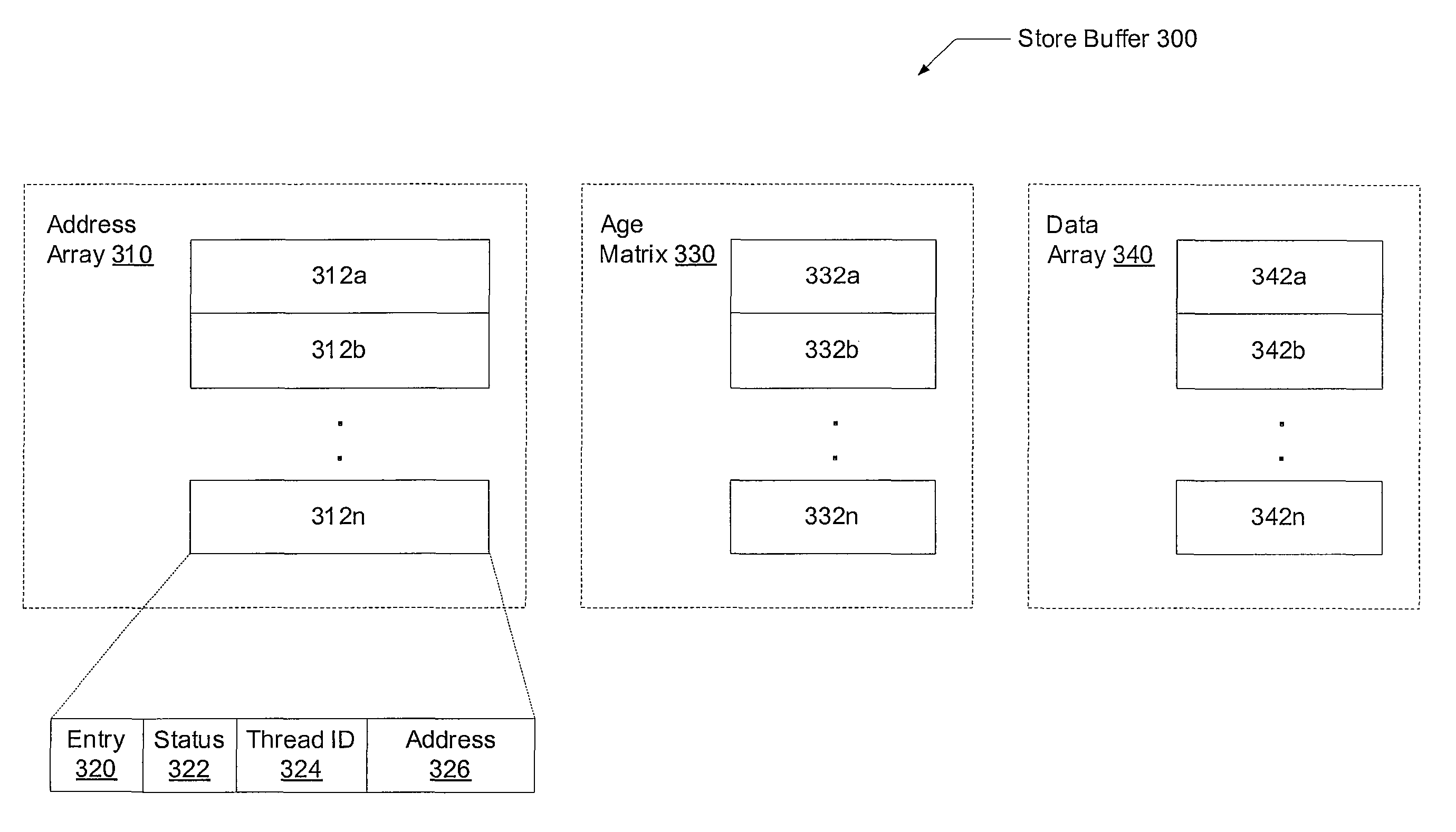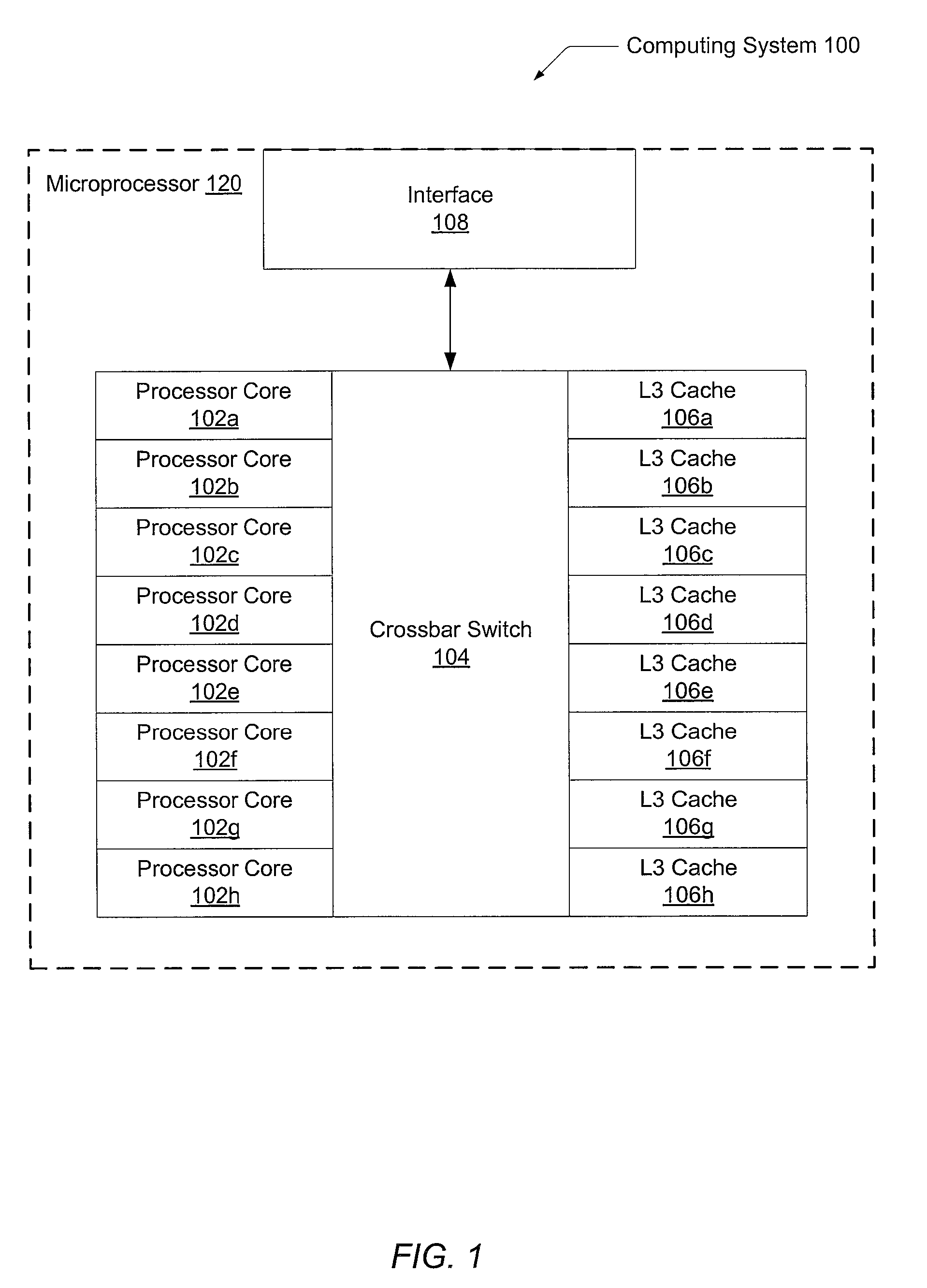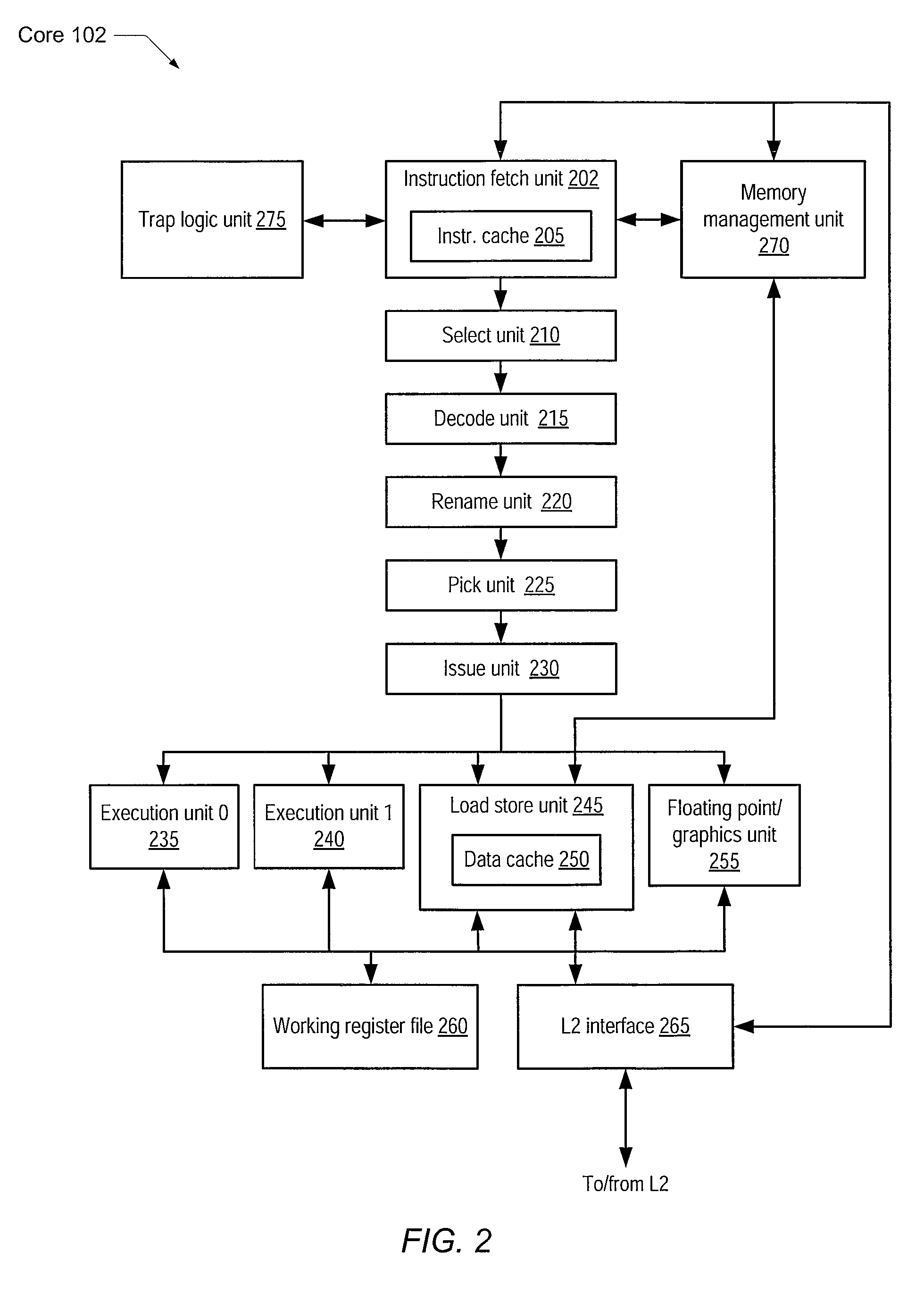Load/store ordering in a threaded out-of-order processor
a load/store ordering and out-of-order processor technology, applied in computing, instruments, electric digital data processing, etc., can solve the problems of single-threaded sb not being replicated by the number of threads, and affecting the efficiency of loadstore ordering
- Summary
- Abstract
- Description
- Claims
- Application Information
AI Technical Summary
Benefits of technology
Problems solved by technology
Method used
Image
Examples
Embodiment Construction
[0017]In the following description, numerous specific details are set forth to provide a thorough understanding of the present invention. However, one having ordinary skill in the art should recognize that the invention may be practiced without these specific details. In some instances, well-known circuits, structures, signals, computer program instruction, and techniques have not been shown in detail to avoid obscuring the present invention.
[0018]Referring to FIG. 1, one embodiment of a computing system 100 with a microprocessor 120 comprising multiple instantiated cores 102a-102h is shown. In one embodiment, microprocessor 120 may be a standalone processor within a mobile laptop system, a desktop, an entry-level server system, a mid-range workstation, or other. For such an embodiment, microprocessor 120 may internally utilize a system bus controller for communication, which may be integrated in crossbar switch 104 or it may be a separate design. A system bus controller may couple ...
PUM
 Login to View More
Login to View More Abstract
Description
Claims
Application Information
 Login to View More
Login to View More - R&D
- Intellectual Property
- Life Sciences
- Materials
- Tech Scout
- Unparalleled Data Quality
- Higher Quality Content
- 60% Fewer Hallucinations
Browse by: Latest US Patents, China's latest patents, Technical Efficacy Thesaurus, Application Domain, Technology Topic, Popular Technical Reports.
© 2025 PatSnap. All rights reserved.Legal|Privacy policy|Modern Slavery Act Transparency Statement|Sitemap|About US| Contact US: help@patsnap.com



